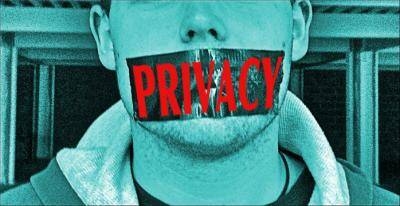Experts and industry leaders claim we’re living in an era of big data, and the numbers certainly prove it. Every minute there is:
2.5 million pieces of content shared on Facebook
300,000 Tweets
72 hours of new video content uploaded to YouTube
50,000 apps downloaded from Apple’s App Store
$80,000 in online sales on Amazon
Those numbers are just a drop in the bucket. When you consider search queries, in-store transactions, customer service calls and wearable technology, it becomes nearly impossible to fathom just how much information is being created every day. Despite its overwhelming nature, analysts are working to mine all this data, using frameworks like Hadoop and things like ad hoc analytics and predictive analytics to uncover important trends and insights. We’ve already seen the benefits of data for companies like Netflix and Amazon, and how it has helped them improve recommendations, but big data has a use in any industry. One growing example is within healthcare and improving treatment and efficiency. The Good News Recent tech trends are contributing to an increased emphasis of data usage within healthcare. One of the best examples is wearable technology. The most popular of today’s health-oriented trackers are fitness trackers. Usually wristbands, these devices can count steps, calories burned and even monitor sleep patterns. More advanced devices in development include clothing that can detect heart rates, sun exposure and even muscle usage. While the average user benefits from reaching daily goals, physicians can use this information to determine if people are at reask of disease, illness or other related problems. Take sun exposure as an example. We know too much exposure to UV radiation can increase cancer risks. Using information from this tracker, a doctor could determine if a patient is at risk, and what preventive measures should be taken. This type of information wouldn’t normally be available until symptoms have developed, at which point it may already be too late. Digital filing is replacing traditional paper filing systems. Today, patients are being outfitted with Electronic Health Records (EHR), which is simply a digital copy of a patient’s paper chart. EHRs can be shared in real-time, and make information available to authorized users. If you are visiting a relative out-of-state and have an emergency, doctors will still have access to your information, and can provide the right treatment. Having a databased filled with patient information allows analysts to find patients with multiple diagnoses and weigh the severity of their conditions. Physicians can then decide which patients have the most urgent needs. EHRs could also be a powerful tool to track if there is a commonality of symptoms developing in a certain area, allowing for early detection of a possible outbreak and quicker response measures. The Bad News Despite the benefits of using data to improve healthcare, there are those resisting the idea, mainly because of privacy concerns. Take EHR as an example. A health database can centralize information for easy data access and analysis, but it also poses serious privacy risks. For one, health information is incredibly personal. Many might feel uncomfortable knowing people can go through their charts and examine their information. Worse, what would happen in the event of a data breach and personal information being leaked into the hands of criminals? What this really boils down to is who owns the data. Is it the individuals who own the devices, the device manufacturers, or the owners of the network where these devices are used? With EHRs, does the patient own the rights to his or her information, or does it now belong to doctors, hospitals and administrators? Should data recorded from your wearables be available to insurance providers as a means of charging specific premiums? There’s no clear answer for the moment. The debate continues, but it’s clear privacy concerns, along with regulations like HIPAA, will affect the way data can be used and stored for healthcare purposes. The Solution The problem is a lack of transparency and openness that exists in the system. Most patients don’t understand how their information is being used, or what data is shared. They don’t know if their identities remain private and if hospitals are treating their documents carefully with proper security measures in place. That’s a lot of ambiguity for such important and sensitive material. The only way to help bridge the gap is to improve communication. Healthcare companies looking to use patient data need to explain exactly what they’re using, why they’re using it and how they’re protecting it. The more transparency and openness, the better. People respond well to honesty, but will quickly reject deceit and secrecy.
Privacy Concerns Are Slowing Big Data Adoption Within Healthcare

In 2008, we formed The Artesian Network, LLC, a consortium of nine core marketing and sales professionals focused on finding and proving the repeatable, predictable revenue models for new companies in B2B technology.Though we are a senior team with very high technical adaptability, in recent years we have had demonstrated particular focus in data and network security, very large scale data management and analytics, artificial intelligence and the convergence with robotics and cloud infrastructure development.We are known for providing insights that are uniquely and strategically valuable, even if uncomfortable at times. Since we are involved at the early stage of the company lifecycle, when pursuing the repeatable business model sometimes the data comes in conflict with the original business thesis. This is where having senior counsel becomes crucial.





